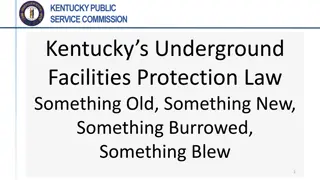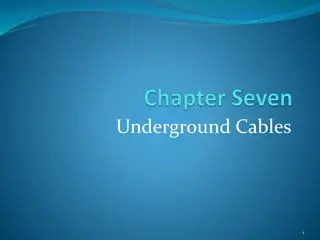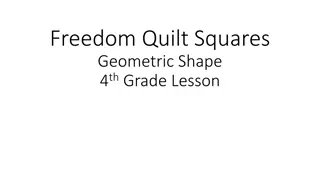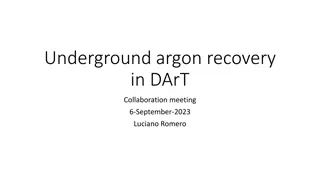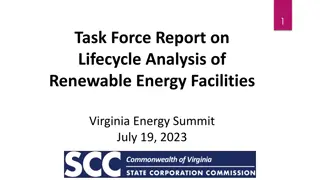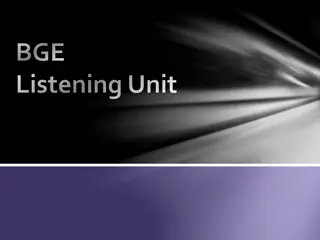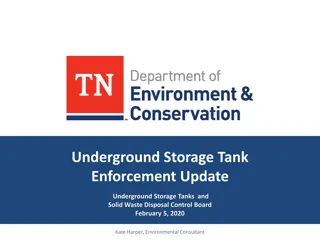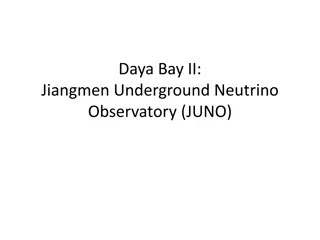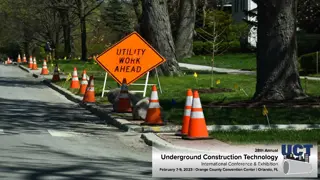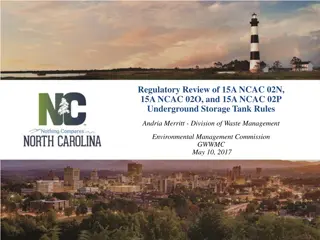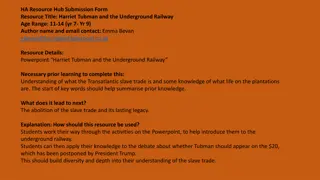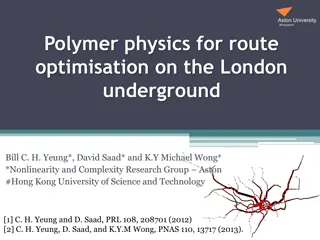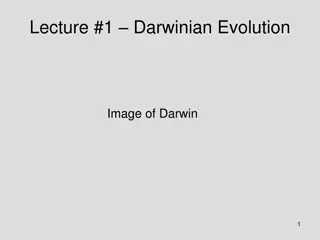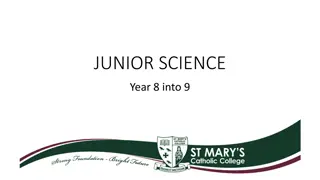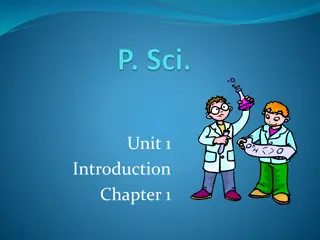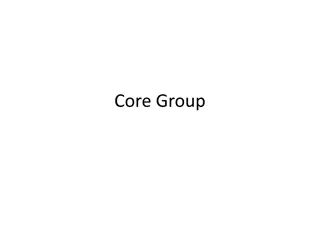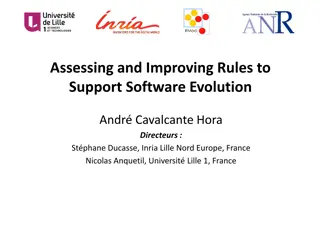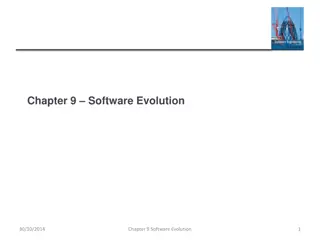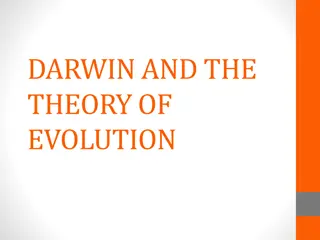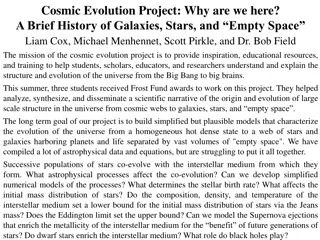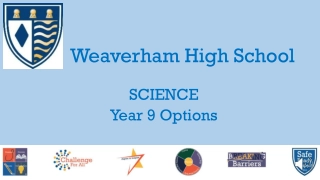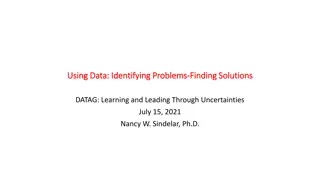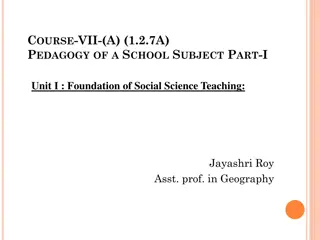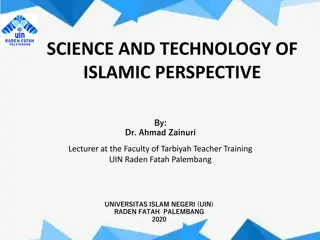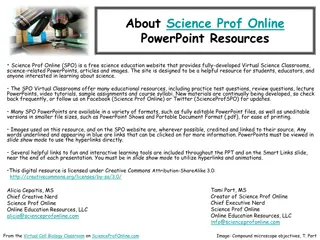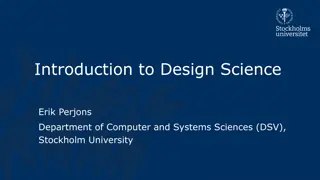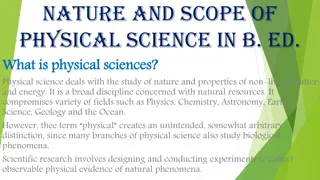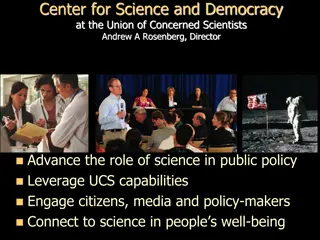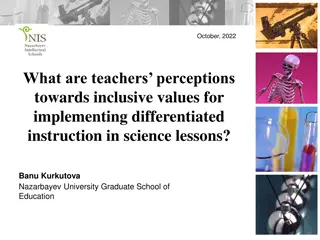Evolution of Underground Science at Laboratoire Souterrain de Modane
Explore the evolution of underground science at Laboratoire Souterrain de Modane, from its inception to becoming a national facility for fundamental physics research. Through mergers and advancements, the facility now hosts a wide range of interdisciplinary topics, including astroparticles, nuclear physics, and more. Discover the history, current projects, and access details of this cutting-edge research facility located in Modane, France.
- Underground Science
- Laboratoire Souterrain de Modane
- Interdisciplinary Research
- National Facility
- Fundamental Physics
Download Presentation

Please find below an Image/Link to download the presentation.
The content on the website is provided AS IS for your information and personal use only. It may not be sold, licensed, or shared on other websites without obtaining consent from the author. Download presentation by click this link. If you encounter any issues during the download, it is possible that the publisher has removed the file from their server.
E N D
Presentation Transcript
Evolution of underground science in LSM Laboratoire souterrain de Modane From digging to modern experiments
Laboratoire Souterrain de Modane Located in Modane 12 permanents 1000 visitors days per year Wide range of interdisciplinary topics Astroparticles, nuclear physic, environment, electronics, radioactivity measurement, biology Guillaume Warot
Laboratoire Souterrain de Modane Merger with Laboratoire de Physique Subatomique & Cosmologie (LPSC-IN2P3) in Grenoble 70 researchers, 90 Engineers & technicians Covering fields in particle & nuclear physics, astroparticle and cosmology LSM now becomes a national facility as labelled by the CNRS National facility for IN2P3 / CNRS LSM as an national experimental facility for : Fundamental Physics Neutrino property determination Direct Dark matter search Gamma spectrometry measurement 14 detectors measuring continuously Open to geosciences, materials, biology and medecine Actually 1000 samples measured per year PARTAGe project to automatize measurments Increase significantly the scope of the LSM Guillaume Warot
Location and access 4 fire-proof doors Footmen entrance FRANCE ITALIE LSM Tunnel Routier du Fr jus Altitudes Distances1228 m 1263 m 6210 m 1298 m 12 868 m 0 m Guillaume Warot
History of LSM 1979 - 1981 1982- 1990 2000 - . 1990- 2000 Prototypes Experiments Proton decay Digging 4 /m2.d 3500m3 400m2 15Bq/m3 Rn in air Radonless air 125m3/h 15mBq/m3 Guillaume Warot
Double beta decay bb0n : (A,Z) (A,Z+2)+2e- Double beta decay DL = 2 n = n Majorana s neutrino mn 0 Measure 0 ( )-1 = C ( ) M2 <mn>2 T 2 / 1 Q5 bb C : phase space factor M : nuclear matrix element < mn > : effective neutrino mass (Qbb~ MeV) Full electron energy < mn > mass hierarchy Guillaume Warot
SuperNemo experiment - - - 82 Se source Extreme radiopurity requirement Special granularity to obtain the source Guillaume Warot
Dark matter search Major physics goal Direct detection would answer to a lot of question WIMP candidate is a target for underground detection CMB anisotropy Speed Guillaume Warot
Dark matter search Edelweiss NEWS Field simulation Guillaume Warot
Dark matter search MIMAC Directional recoil DAMIC-M Galactic coordinates Event topology Guillaume Warot
SHIN Super heavy element with half life >238U Z=108 targeted with self fission producing >5n Nuclear physics Super Heavy Element In nature SHIN (osmium ore surrounded by 3He neutron detectors) TGV II Guillaume Warot
Low radioactivity constraints Requirement on material below mBq Strong pressure on analytical capabilities Increased number of pieces and longer time Main measurement performed by gamma ray spectrometry Constant effort took place in LSM to develop ultra low background germanium Expected 24 HPGe by 2020 Guillaume Warot
High purity germanium Semi conductor crystal cooled down to 77 K Sample at room temperature Sensitive to gammas from 20keV up to 3MeV Non destructive measurement Sensitive to muons and cosmic activation Different detectors adapted to samples shape Coax Well Planar endcap sample crystal cold finger Guillaume Warot
Future of measurement at LSM PARTAGe project Combining shields in common walls Robotisation Optimisation of measurement time based on the radiopurity objectives Guillaume Warot
Germanium detector Example of detection limits Mafalda : (our swiss army knife) Shielding 536 Size 150 cc 43,1% 80mm h 31,7mm Resolution 122 keV 920 eV 1,33MeV 1,97keV Std Std Background Integral 115 3,5 count/day 133 c/kg Peaks 46,5 keV 1,49 0,37 c/d [210Pb] 75 keV 3,6 0,62c/d [Pb] ARCH Silicon wafer measurement 700 000s 650g 1,43+2,36 1,36+??? ? limit (Bq)= Nucleide 210Pb < 1,58E-02 226Ra < 1,27E-03 238U < 6,27E-03 228Ra < 3,82E-03 228Th < 8,66E-04 Bq/kg ? ? ? ? ? =???????? ??????? Guillaume Warot
Analitycal power for interdiciplinarity Possibility to measure a wide range of nucleides Used in many environmental datation Relative datation Absolute datation 137Cs + 241Am 1963 137Cs only 1986 e = 210 210 0 ex t ex t ( ) ( ) Pb Pb z = + 210 210 0 ex t ex ( ) - ( ) Ln Pb Ln Pb V Guillaume Warot
Lake survey 210Pb gives the sedimentation rate Confirmed by artificials nucleides Allowing to reconstruct the history of a lake without archives Sabatier et al., 2014, PNAS Guillaume Warot
Ice survey Datation of ice core in antartica Calibration of radar Temporal marker for climate change 2 days measure needed in underground lab Guillaume Warot
Erosion survey Sources of sediment in mining catchments of New Caledonia Two main sources of sediment to the main river Non-mining tributaries Mining tributaries 137Cs 137Cs Discrimination of contributions of both types of tributaries based on their activities in natural/artificial radionuclides Quantification using mixing models Analysis of sediment cores collected in the delta to reconstruct changes in source contributions with time Guillaume Warot
Electronic SER test Sensitivity of electronic to ionising radiation At sea level neutron and alpha contribution LSM reference point in JEDEC standard for 0 neutron 130nm 65nm vs. 130 nm SRAM (SP-SRAM) 150 120 Number of bit flips 65nm Altitude (ASTEP) 90 130nm 65nm 60 Underground (LSM) 30 Adapted after Baumann, IEEE Trans. Device Mater. Reliab. 5, 305-316 (2005) 0 0 7 Test duration [MBit.h] 7 7 7 2x10 4x10 6x10 8x10 Altitude SEE Test European Altitude SEE Test European Platform Platform Guillaume Warot
Biology at LSM Evolution driven by radiation Comparison between surface and underground bacteria culture 800 generations harvested Guillaume Warot
Stem cell storage LSM-pasteur institute collaboration Funded by interdisciplanary mission from CNRS Allowed to test a stem cell storage shielded from natural radioactivity and terrestrial cosmic rays Patented solution Publication in progress Industrial prototype in development Guillaume Warot
Conclusion Underground labs are designed for large scale fundamental physics Unique environment find always a use sometimes unforeseen at digging Leaves room for interdisciplinary program at moderate cost New fields and discoveries made possible by the access to low level radiation environment Guillaume Warot



